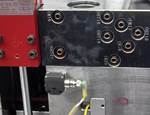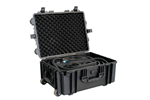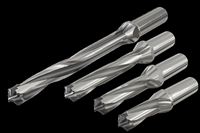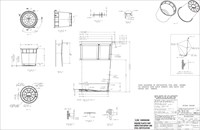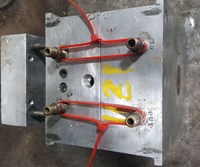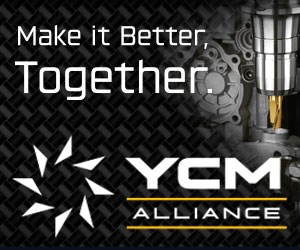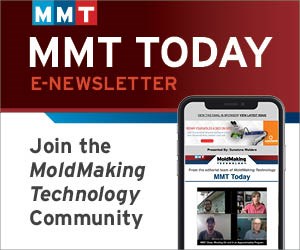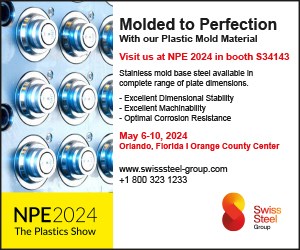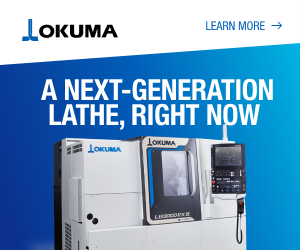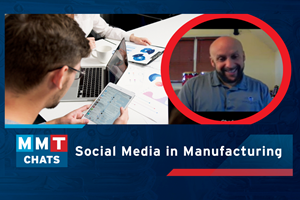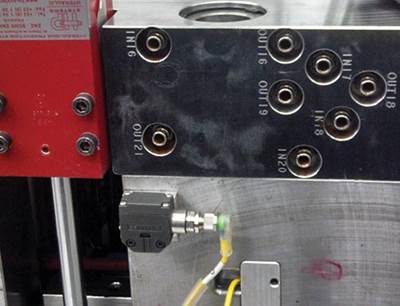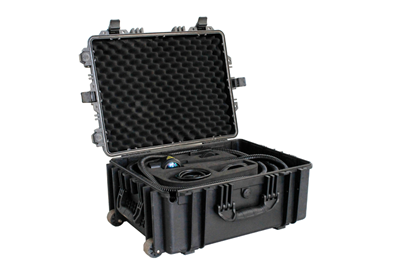Collaboration Makes the Impossible Possible
For Industrial Molds Group, successfully completing a complex 2×2, two-shot family mold demanded a level of collaboration similar to that required by a symphony orchestra. A leading manufacturer of power tools was under severe pressure to begin production for a new product that had to be on store shelves by Memorial Day or the customer (a major retailer) would cancel orders for the entire year.
For Industrial Molds Group, successfully completing a complex 2×2, two-shot family mold demanded a level of collaboration similar to that required by a symphony orchestra.
A leading manufacturer of power tools was under severe pressure to begin production for a new product that had to be on store shelves by Memorial Day or the customer (a major retailer) would cancel orders for the entire year. The OEM was caught off guard by this notice and was especially concerned because it was received just before the 2013 Christmas holiday season.
The OEM selected Industrial (winning the 2012 Leadtime Leader Award was said to be key to the decision), wrapped up negotiations on January 16 and placed the tooling order the next day. The clock was ticking. Industrial had 71 days to complete the initial tool build and ship it to the molder.
Not only was the mold complex, but the sheer number of companies and individuals involved in the project made collaboration complex, as well. The OEM had contracted the part design to a company in Minnesota; the injection molding to a company in northern Mexico; and, to save time on mold design, Industrial Molds enlisted mold/tool design service provider The Design Phactory. A total of five players were involved in the mold design phase alone.
Then the OEM made part design modifications (including a texture change requiring part draft concessions), and The Design Phactory requested part geometry changes to improve moldability, all of which were implemented and documented within hours.
Industrial co-owners Tim and Eric Peterson chose 25-year veteran Kerry Smith to oversee the entire project, primarily because he was instrumental in developing the majority of the company’s strategic vendor relationships. “Jobs like this can’t even be considered without the right people in place, both internally and externally,” Smith says. “It takes years to develop the talents and relationships necessary to meet these kinds of demands.”
Smith began organizing and motivating key decision-makers even before the purchase order was released. He chose veteran Dean Franks as lead toolmaker and would rely heavily on EDM/Automation Manager Dennis Nord. He chose Incoe as the hot runner supplier because of its proven product quality and delivery. Mold-Tech committed to shaving three days from the texturing process, and this would play a major role in the project’s success.
There were challenges, but thanks to the cooperative efforts of those involved in the project, they were quickly resolved. For example, two weeks prior to the mold’s scheduled completion, the injection molder made a resin change. Fortunately, the new resin with UV stabilizers had a shrink rate very similar to that of the original resin, avoiding a potential catastrophe.
On March 29, the mold was placed on a truck for delivery to the Mexican molding facility. Mold sampling took place the following day with support from Industrial and Jesus Olivas, an Incoe technical specialist fluent in Spanish. The OEM’s engineering manager arrived a few days later for part inspection and a second round of sampling that resulted in quality first-shots—impressive considering the project’s compressed time frame.
As of this writing, the mold is back at Industrial for texturing and modifications to the steel safe areas. “We are grateful to have employees and partners capable of turning this challenge into a reality,” Industrial’s Tim Peterson says. With a smile he adds, “We’re ready for the next one.”
Related Content
Editorial Guidelines: Editorial Advisory Board
The Editorial Advisory Board of MoldMaking Technology is made up of authorities with expertise within their respective business, industry, technology and profession. Their role is to advise on timely issues, trends, advances in the field, offer editorial thought and direction, review and comment on specific articles and generally act as a sounding board and a conscience for the publication.
Read MoreThe Role of Social Media in Manufacturing
Charles Daniels CFO of Wepco Plastics shares insights on the role of social media in manufacturing, how to improve the “business” side of a small mold shop and continually developing culture.
Read MoreMMT Chats: Impressions and Inspirations from AMBA Event that “Shifts the View”
MoldMaking Technology Editorial Director and Managing Editor share their takeaways from a recent American Mold Builders Association Conference focused on leadership and mentorship in the moldmaking community. This episode is brought to you by ISCAR with New Ideas for Machining Intelligently.
Read MoreMMT Chats: Simple Steps to Get Your Social Media Campaign Started
MoldMaking Technology Editorial Director Christina Fuges catches up with Gail Now’s Chief Curiosity Officer Gail Robertson. We talk about the importance of using the curiosity tool to tell your stories as part of a marketing strategy that includes social media. This episode is brought to you by ISCAR with New Ideas for Machining Intelligently.
Read MoreRead Next
Reasons to Use Fiber Lasers for Mold Cleaning
Fiber lasers offer a simplicity, speed, control and portability, minimizing mold cleaning risks.
Read MoreHow to Use Strategic Planning Tools, Data to Manage the Human Side of Business
Q&A with Marion Wells, MMT EAB member and founder of Human Asset Management.
Read More
